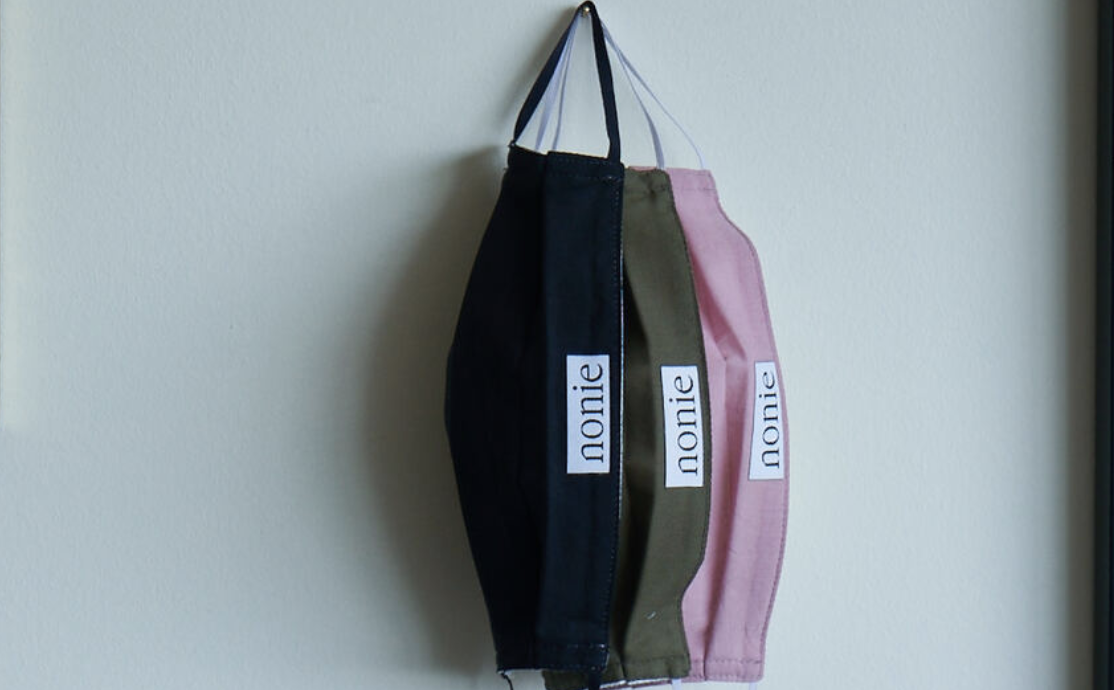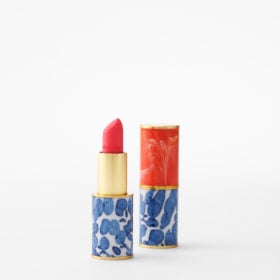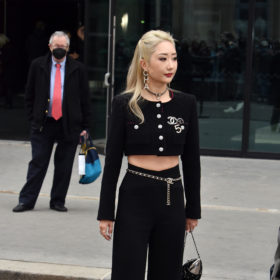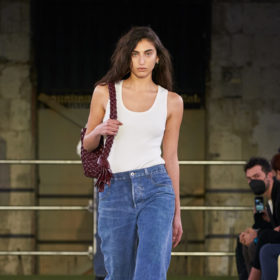
April 01, 2021 at 07:29PM
In early March of last year, Greta Constantine designers Kirk Pickersgill and Stephen Wong were returning to Toronto from Paris, where they had presented their Fall 2020 ready-to-wear collection to eager buyers. “We had a really great season,” Pickersgill recalls. Thirteen days later, the world ground to a halt. “Orders were cancelled left, right and center,” he says of the chaotic early days of the COVID-19 pandemic. Suddenly, shuttering their 15-year-old brand was a real possibility: “It was a sink or swim moment,” he adds.
During a year where there was nowhere to go and nothing to dress up for, non-medical face masks were the one must-have accessory; with the Public Health Agency of Canada recommendation that masks be worn within two meters of any person outside of your household, you can’t get far without one. For many Canadian fashion designers, producing face masks became a way to generate some revenue amidst sluggish sales; but it also allowed them to connect with their industry peers and give back to the community.
Pickersgill found himself personally cutting and sewing for the first time in a decade, using discarded bits of the brand’s signature machine-washable Italian microfibre knit to create elaborately ruffled (and other very on-brand) masks, which were deliberately sold via retailers rather than direct to consumer.
“[The face masks allowed] the retailer to have a conversation with the consumer to say, ‘I know it’s not the moment to go shopping for events, but we’re still here for you,’” says Pickersgill. The work, he says, also bolstered his mental health.
View this post on Instagram
ADVERTISEMENT
ADVERTISEMENTKate Spade Autumn/Winter Sale |
Likewise, Julia Barnes, the Calgary-based designer behind the inclusive swimsuit line Honubelle, found making masks gave her a sense of purpose early on in the pandemic. “It was never meant to be a large-scale production,” says Barnes, who handcrafted masks from upcycled fabrics she sourced from second-hand stores. The goal wasn’t to turn a profit, she says: “It was more about giving back.”
As Canadian designers made masks, Canadian shoppers were eager to purchase them. There was a groundswell of support for local businesses during the pandemic — one Nina Kharey, designer of womenswear line Nonie, says she saw first-hand. While her brand was hardly under-the-radar (Nonie pieces have been worn by the likes of Meghan Markle), Kharey says new consumers discovered Nonie when seeking out Canadian-made masks.
“I got so many emails from people saying, ‘I never even knew you existed and I’m so excited to find you because I’m always looking for a Canadian fashion line to support,’” says Kharey, who, in addition to selling non-medical masks, secured a government contract for her business to make medical-grade masks for healthcare workers.
View this post on Instagram
“We were producing 5,000 to 10,000 a week,” she notes. (The Calgary-based designer’s other pandemic project, Folds — a line of recyclable and sustainably made antiviral, antibacterial and antimicrobial scrubs for medical professionals — launched in January of this year and promptly sold out. Kharey says they are now taking pre-orders and fielding interest from hospitals wishing to order scrubs for their entire staff.)
The consumer desire to purchase a mask from a Canadian brand, however, does not always translate to purchases from its core collection — and for many designers, they never saw face mask production as a long-term strategy, anyway.
Despite demand being so high that Barnes had to increase the price of her masks to cover the cost of shipping to customers across Canada, she does not plan to resume production. “Honubelle is just a small team,” she explains. “If I want to stay true to the brand and what we do, there’s not enough resources right now to get into [mass] face mask production.”
At Greta Constantine, masks sought to help with brand visibility and support retailers during the downturn in sales. When they launched in May 2020, face masks were 25 percent of the brand’s total monthly revenue. In June, they were 50 percent. By August, mask sales were only 20 percent of revenue — a sign that customers were ready to begin purchasing ready-to-wear and eveningwear once again.
View this post on Instagram
But for other Canadian brands, masks have become part of their core collection. David Torjman, founder of 18Waits, calls masks “a real natural progression” for its menswear line. 18Waits masks borrow best-selling prints from its well-tailored shirts: think charcoal herringbone and indigo paisley. “Accessories have always played an important, but sartorially fun, part of offering,” says Torjman, who sees the potential for masks to be another fashionable outlet for creative expression (the brand also created tutorials for how to make their mask patterns) — though the ability to be selective about your mask style is, of course, a luxury not all can afford. While masks weren’t a big revenue driver — “we’ve probably given away more masks than we’ve sold,” he says, noting the brand relied on e-commerce to replace lost sales from their shuttered brick-and-mortar location — selling them aligns with their brand DNA.
While designers around the world are still reeling from one of the most challenging periods in history, Pickersgill says he is optimistic about the future — and Canadian fashion. (And with good reason: just earlier this year, inaugural poet Amanda Gorman wore a Greta Constantine gown on the cover of Time magazine.) “It made for a completely different atmosphere in the company and a new way of moving forward,” says Pickersgill of the pandemic. “Right now, I can say I’m prepared for anything.”
The post Did Face Masks Save Canadian Fashion? appeared first on FASHION Magazine.
ADVERTISEMENT
ADVERTISEMENTSports Direct Free Delivery on All Orders! |
Read More Fashion News
Author Victoria DiPlacido | Fashion Magazine
Selected by CWC
ADVERTISEMENT
ADVERTISEMENTUp to 30% off Gift Sets |






